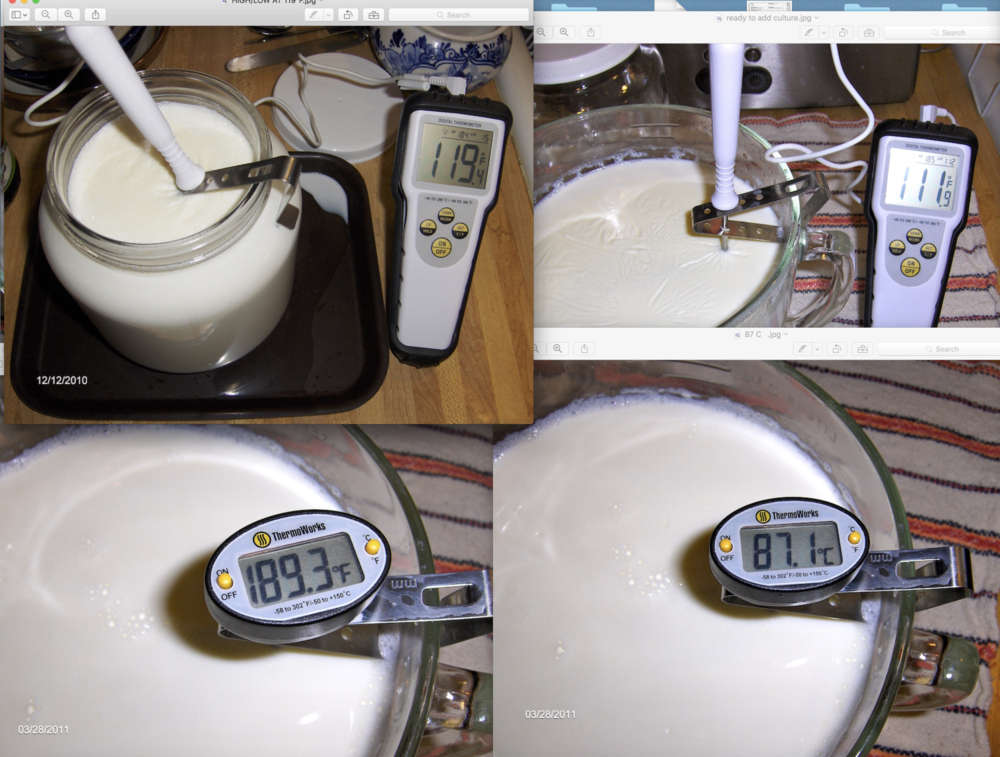The BEST way to get a consistent result is to follow the specific directions. Heat the milk or cream to at least 180° which is the temperature where the CASEIN converts. I heat in the microwave in a 2 quart Pyrex measure to 190°F
I then cool it to 115° F. And I have a high/low alarm probe thermometer so I know the precise temperature.
Any temperature HIGHER THAN 120° F will KILL THE CULTURE AND YOU WILL JUST HAVE SOUR MILK.
I have been making yogurt since the 1970s and when I lived in my motorhome for 3 years when I was actively showing dogs, I used a laboratory transport cooler which had thick insulation and with the use of a small heating pad, would maintain the yogurt at 95°F for the 12 hours incubation period.
I use what works for me and have a Yogotherm (non-electric) that I mostly use for other dairy procedures and I have
A Tribest YoLife electric yogurt maker that came with a half-gallon jar and some smaller jars that I never used.
I got it years ago when I was still working - early 2000s. It works great for me.
Last year I evaluated a Proctor Silex yogurt maker - I think it made a quart - worked very well. It had not yet been launched so I had no idea what the price would be. I gave it to the young woman who helps me in the house and yard from time to time.
I just checked, it is 40.99 on Amazon.
The milk STILL HAS TO BE HEATED TO OVER 180°F. and then cooled to below 120 to add the culture but then the appliance will hold it at the pre-set temp 110°F. until done.
Editing to add photos of thermometers. One is an inexpensive probe using a clip-on probe holder, also sold by Thermoworks. The other is the high-low alarm thermometer from Thermoworks. These photos are from 2011.





